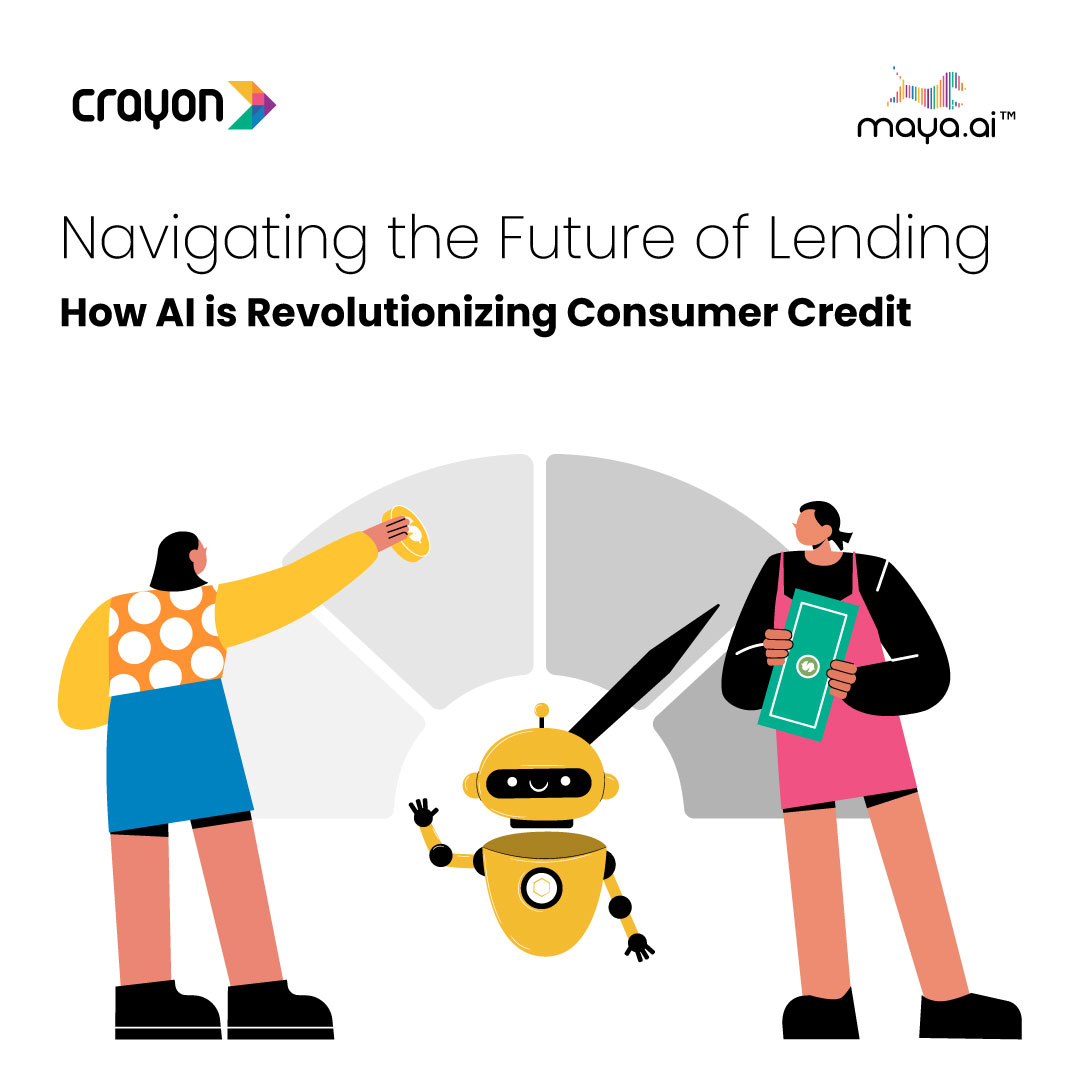If 2015 was the ‘year of data science’ then 2016 is when it’s going to take over completely. In the past year, we saw many applications of data science in our everyday lives- from Uber, to Amazon, to Siri, to image recognition, to generally smarter marketing campaigns… data science made its presence felt. But to say that data science is now completely ‘mainstream’ would still not be quite accurate. In 2016, data science plans to become more exciting and impactful. Here’s a look at some of the exciting developments in the world to data science.
While the finance industry has been one of the earliest adopters of data science, this adoption has not been uniform across all the banking services verticals. In 2016, we can expect to see greater data usage for personalization of services for not just financial markets but to retail banking as well. This move is expected to positively impact product development and marketing along with customer service.
Data use for predictive analytics to understand what a customer wants, goes beyond just collecting a set of names and email addresses. With increasing social interactions, predictive analytics tools have to have the capability to marry data from traditional sources with dynamic data sets such as economic news, weather, social conversations, in-store activity etc. for ultra-targeted personalized marketing initiatives. Clearly, the boundaries dividing offline and online are going to blur further with the data intervention this year.
The rise of mobile advertising will further cement the role of data in marketing environments that will lead to more impressive personalization of campaigns and offerings.
The insurance sector also plans to use data a great deal more by utilizing health data generated from wearable devices to better monitor and assess health and well being of individuals.
However, in order to leverage data to its full potential by enabling free movement of data across geographies, the twin concerns of security and online privacy need to be addressed. Even regulatory issues arise – fragmentation of data because of security and privacy issues need to be resolved between EU and USA so that infrastructure costs owing to compliance and security requirements can be controlled.
How is 2016 shaping up for data science – Trends
Subscribe to the Crayon Blog. Get the latest posts in your inbox!
How is 2016 shaping up for data science – Trends
If 2015 was the ‘year of data science’ then 2016 is when it’s going to take over completely. In the past year, we saw many applications of data science in our everyday lives- from Uber, to Amazon, to Siri, to image recognition, to generally smarter marketing campaigns… data science made its presence felt. But to say that data science is now completely ‘mainstream’ would still not be quite accurate. In 2016, data science plans to become more exciting and impactful. Here’s a look at some of the exciting developments in the world to data science.
While the finance industry has been one of the earliest adopters of data science, this adoption has not been uniform across all the banking services verticals. In 2016, we can expect to see greater data usage for personalization of services for not just financial markets but to retail banking as well. This move is expected to positively impact product development and marketing along with customer service.
Data use for predictive analytics to understand what a customer wants, goes beyond just collecting a set of names and email addresses. With increasing social interactions, predictive analytics tools have to have the capability to marry data from traditional sources with dynamic data sets such as economic news, weather, social conversations, in-store activity etc. for ultra-targeted personalized marketing initiatives. Clearly, the boundaries dividing offline and online are going to blur further with the data intervention this year.
The rise of mobile advertising will further cement the role of data in marketing environments that will lead to more impressive personalization of campaigns and offerings.
The insurance sector also plans to use data a great deal more by utilizing health data generated from wearable devices to better monitor and assess health and well being of individuals.
However, in order to leverage data to its full potential by enabling free movement of data across geographies, the twin concerns of security and online privacy need to be addressed. Even regulatory issues arise – fragmentation of data because of security and privacy issues need to be resolved between EU and USA so that infrastructure costs owing to compliance and security requirements can be controlled.
Subscribe to the Crayon Blog. Get the latest posts in your inbox!
How is 2016 shaping up for data science – Trends
If 2015 was the ‘year of data science’ then 2016 is when it’s going to take over completely. In the past year, we saw many applications of data science in our everyday lives- from Uber, to Amazon, to Siri, to image recognition, to generally smarter marketing campaigns… data science made its presence felt. But to say that data science is now completely ‘mainstream’ would still not be quite accurate. In 2016, data science plans to become more exciting and impactful. Here’s a look at some of the exciting developments in the world to data science.
While the finance industry has been one of the earliest adopters of data science, this adoption has not been uniform across all the banking services verticals. In 2016, we can expect to see greater data usage for personalization of services for not just financial markets but to retail banking as well. This move is expected to positively impact product development and marketing along with customer service.
Data use for predictive analytics to understand what a customer wants, goes beyond just collecting a set of names and email addresses. With increasing social interactions, predictive analytics tools have to have the capability to marry data from traditional sources with dynamic data sets such as economic news, weather, social conversations, in-store activity etc. for ultra-targeted personalized marketing initiatives. Clearly, the boundaries dividing offline and online are going to blur further with the data intervention this year.
The rise of mobile advertising will further cement the role of data in marketing environments that will lead to more impressive personalization of campaigns and offerings.
The insurance sector also plans to use data a great deal more by utilizing health data generated from wearable devices to better monitor and assess health and well being of individuals.
However, in order to leverage data to its full potential by enabling free movement of data across geographies, the twin concerns of security and online privacy need to be addressed. Even regulatory issues arise – fragmentation of data because of security and privacy issues need to be resolved between EU and USA so that infrastructure costs owing to compliance and security requirements can be controlled.
Subscribe to the Crayon Blog. Get the latest posts in your inbox!
How is 2016 shaping up for data science – Trends
If 2015 was the ‘year of data science’ then 2016 is when it’s going to take over completely. In the past year, we saw many applications of data science in our everyday lives- from Uber, to Amazon, to Siri, to image recognition, to generally smarter marketing campaigns… data science made its presence felt. But to say that data science is now completely ‘mainstream’ would still not be quite accurate. In 2016, data science plans to become more exciting and impactful. Here’s a look at some of the exciting developments in the world to data science.
While the finance industry has been one of the earliest adopters of data science, this adoption has not been uniform across all the banking services verticals. In 2016, we can expect to see greater data usage for personalization of services for not just financial markets but to retail banking as well. This move is expected to positively impact product development and marketing along with customer service.
Data use for predictive analytics to understand what a customer wants, goes beyond just collecting a set of names and email addresses. With increasing social interactions, predictive analytics tools have to have the capability to marry data from traditional sources with dynamic data sets such as economic news, weather, social conversations, in-store activity etc. for ultra-targeted personalized marketing initiatives. Clearly, the boundaries dividing offline and online are going to blur further with the data intervention this year.
The rise of mobile advertising will further cement the role of data in marketing environments that will lead to more impressive personalization of campaigns and offerings.
The insurance sector also plans to use data a great deal more by utilizing health data generated from wearable devices to better monitor and assess health and well being of individuals.
However, in order to leverage data to its full potential by enabling free movement of data across geographies, the twin concerns of security and online privacy need to be addressed. Even regulatory issues arise – fragmentation of data because of security and privacy issues need to be resolved between EU and USA so that infrastructure costs owing to compliance and security requirements can be controlled.
Subscribe to the Crayon Blog. Get the latest posts in your inbox!




